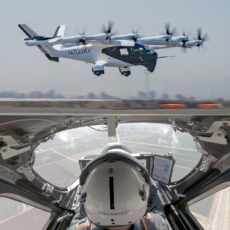
Joby Aviation has just completed a surprisingly quiet revolution in the skies over a California airfield. On November 7, their latest model, a turbine electric vertical takeoff and landing aircraft, took off for the first time from their Marina facility. This aircraft has combined the clean lift of electric motors with the constant leg-up of a gas turbine, resulting in longer flights and heavier loads than anyone could have dreamed.
A crew of engineers watched as it took off straight up, tilted into forward motion, and landed smoothly. It’s just been three months since those same engineers first discussed the idea, and Joby has already made it a reality, demonstrating that we engineers, with our insistence on doing things the hard way, are capable of achieving true innovation much faster than most people believe.
- Due to platform compatibility issue, the DJI Fly app has been removed from Google Play. DJI Neo must be activated in the DJI Fly App, to ensure a...
- Lightweight and Regulation Friendly - At just 135g, this drone with camera for adults 4K may be even lighter than your phone and does not require FAA...
- Palm Takeoff & Landing, Go Controller-Free [1] - Neo takes off from your hand with just a push of a button. The safe and easy operation of this drone...
Joby engineers began with their tried-and-true all-electric model, which has already logged over 50,000 miles in test flights and is expected to receive approval from federal regulators to carry passengers. They preserved the basis of it all: six tilting propellers for a smooth transition from hovering to cruising, a cockpit large enough for one or two passengers, and a lightweight but strong frame to resist rugged terrain.
However, the powertrain received the most significant change. Batteries are sufficient for short journeys around cities, but for this variant, a small turbine generator has been added to help give the motors a little extra oomph when covering larger distances. And the way it all works is that the props are still powered entirely by electricity for those initial vertical climbs, making the aircraft quiet and efficient from the time it takes off. Then, once you’ve gained altitude, the turbine comes in, and you suddenly have the range to conduct some real-world tasks, such as transporting supplies to difficult terrain or scoping out isolated locations.
This aicraft’s autonomy stems from Joby’s SuperPilot technology, which has had five peaceful years to fully mature. That software has been adjusted and polished to the point where it not only monitors the skies for potential obstructions, but also plots the best route across even the most congested airspace – all on its own, with a team of people watching from the ground. This is no small thing: with this level of autonomy, the aircraft can communicate with other machines or even follow other planes flown by humans, eliminating the need for constant supervision. Joby learned a key lesson from a small summer exercise in the Pacific where SuperPilot flew a regular cargo jet 7,000 miles from the land with no person at the controls and came out on top; the technology is more than capable of handling even the most difficult conditions.

It all began with a discussion about defense needs, and a collaboration with L3Harris has truly brought this to reality. The military is looking for aircraft that can enter into tight spaces, such as places with short runways and a high threat level. Joby’s answer perfectly fits the bill: it can hover like a helicopter to make precise drops before cruising like a fixed-wing plane to cover a significant distance. Then L3Harris adds all the accessories, like as sensors, communications, and so on, transforming this base model into a true tool for transporting gear where it needs to go quickly, or for providing a pair of eyes to fighter pilots when they require extra assistance. Along the way, they’ve spotted prospects for positions such as loyal wingman duty, in which the aircraft flies alongside the crew and exchanges data to boost their performance. And, with the Pentagon planning to invest in next-generation aircraft in its future budget, this demonstration comes just in time to demonstrate how quickly the civilian sector can assist the military in gaining the necessary advantage.










